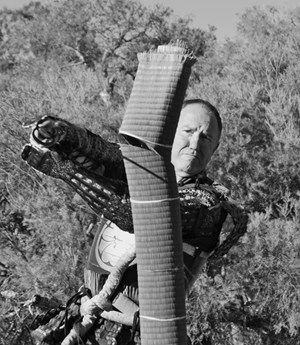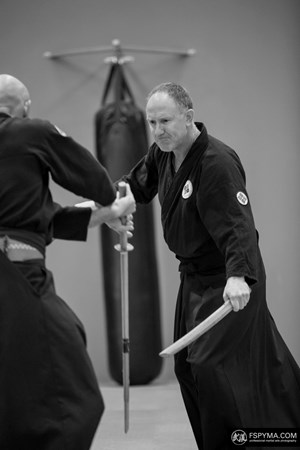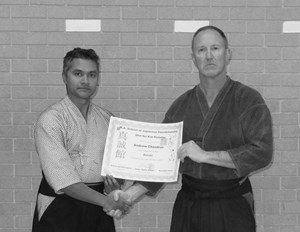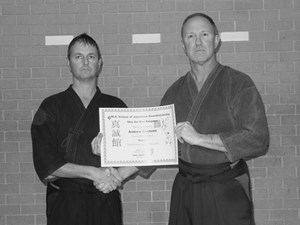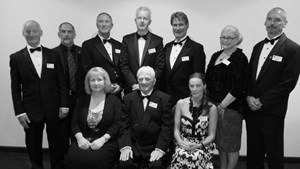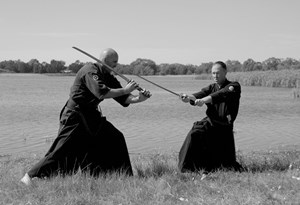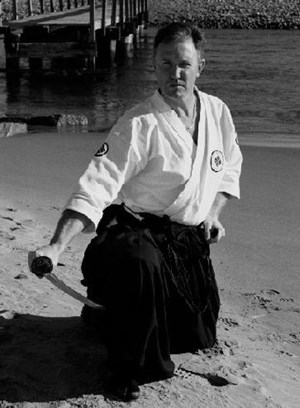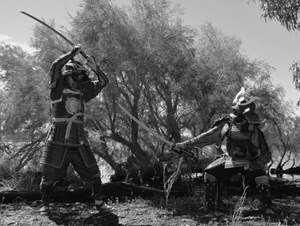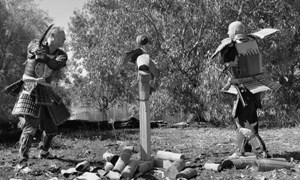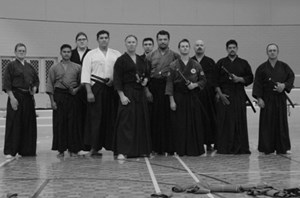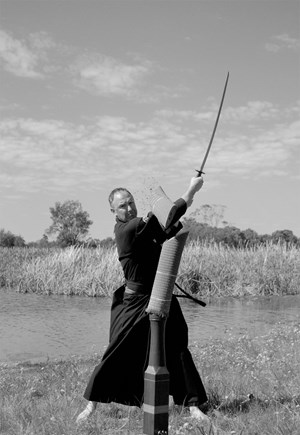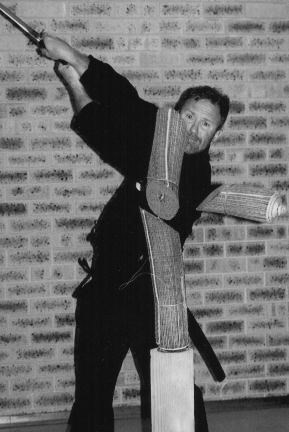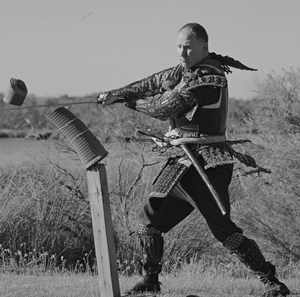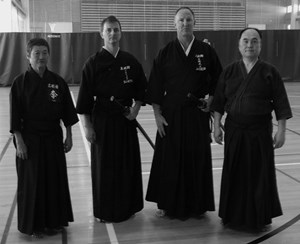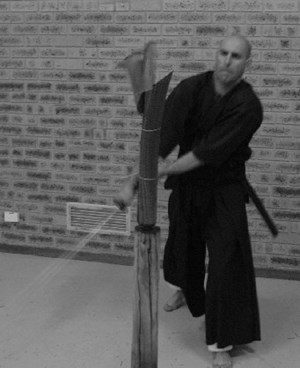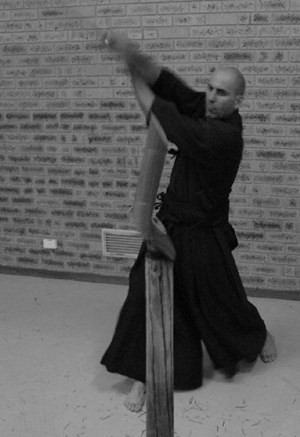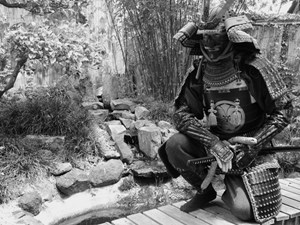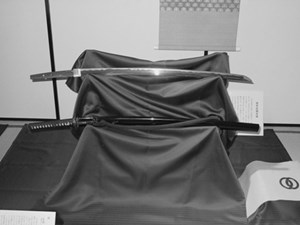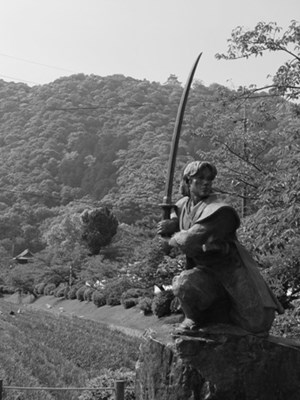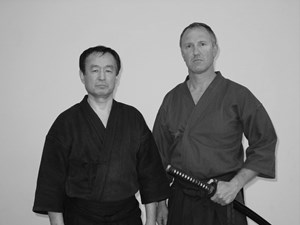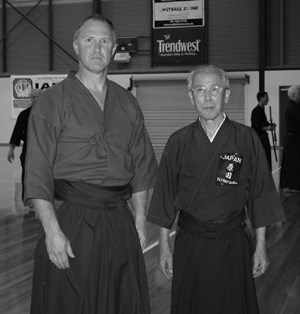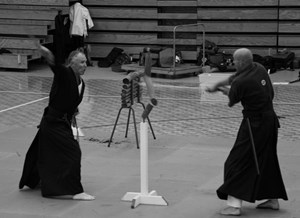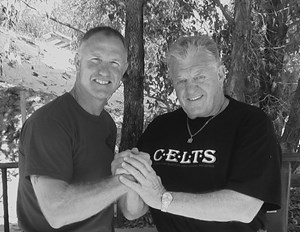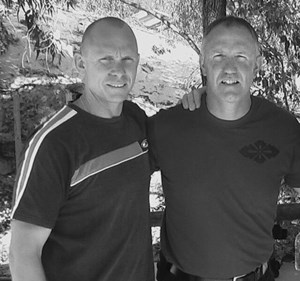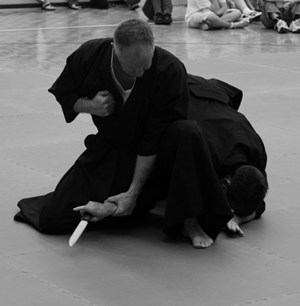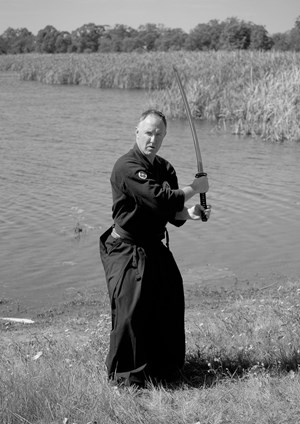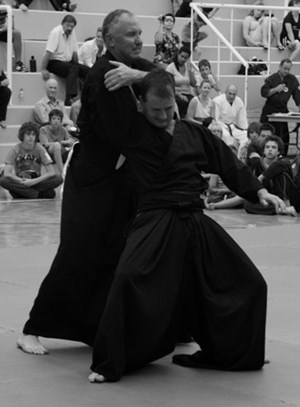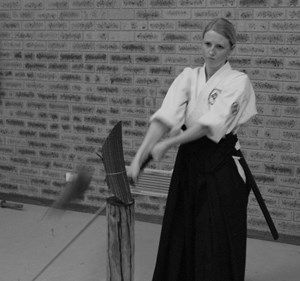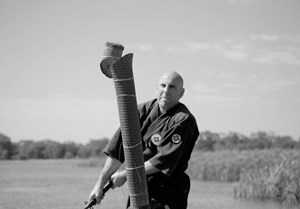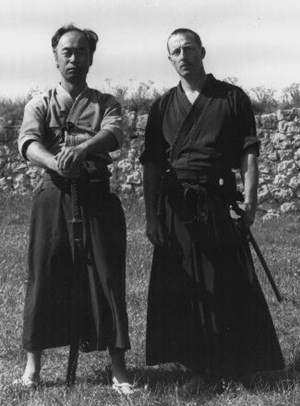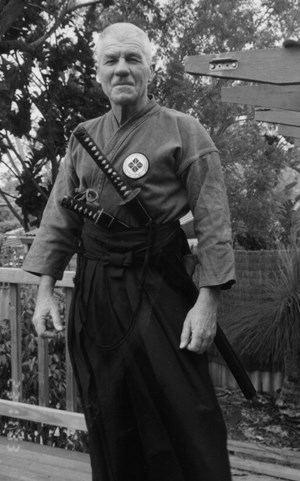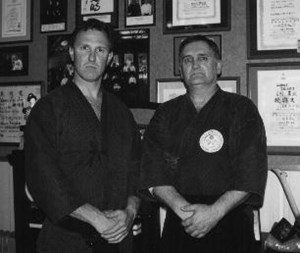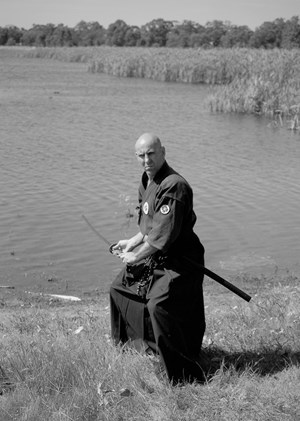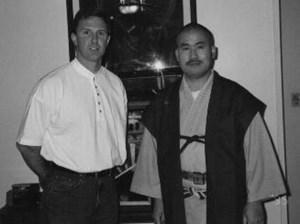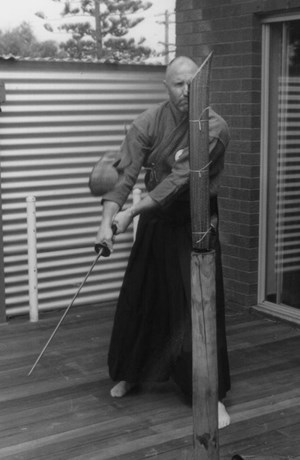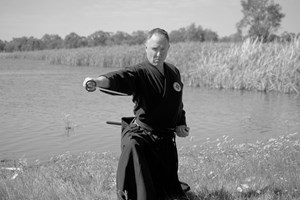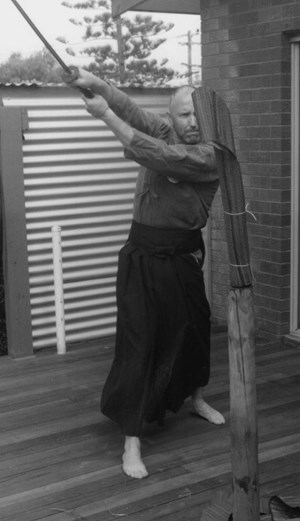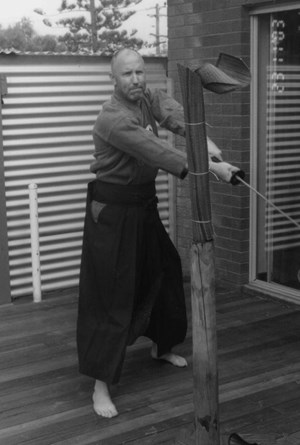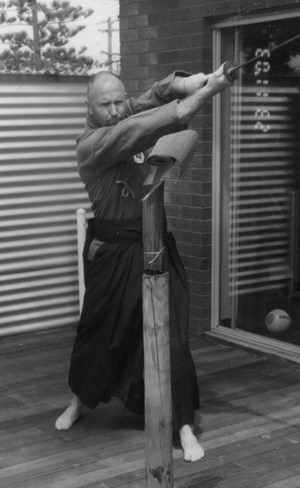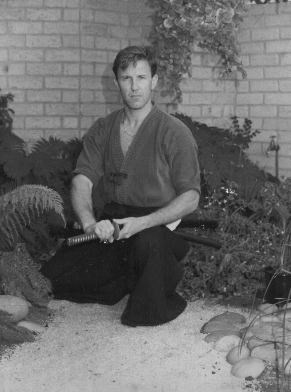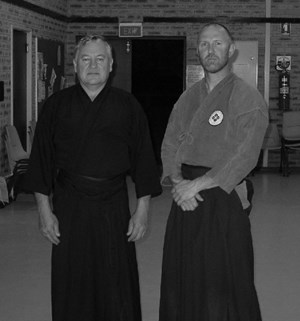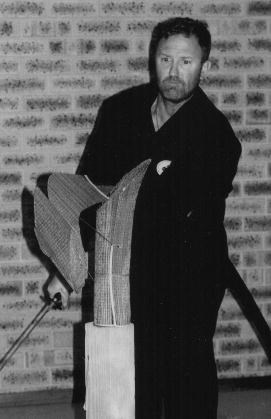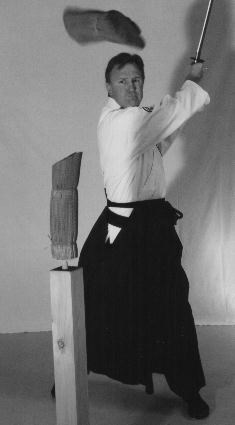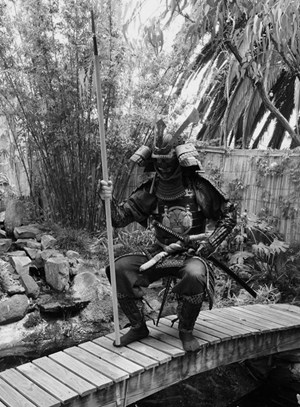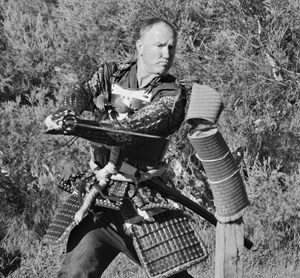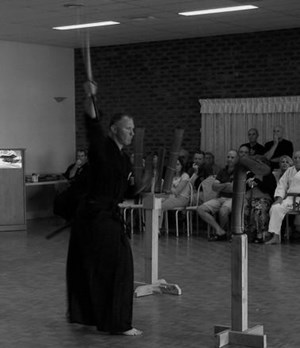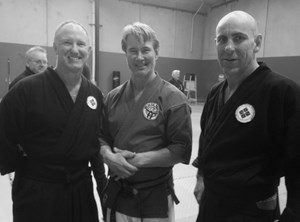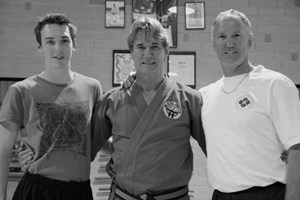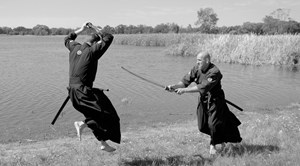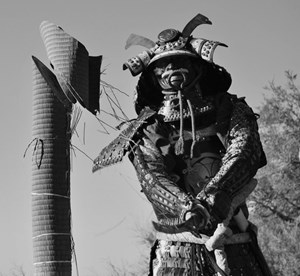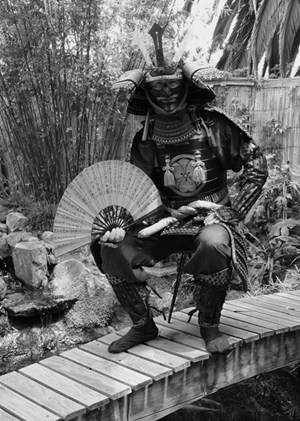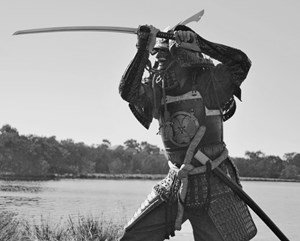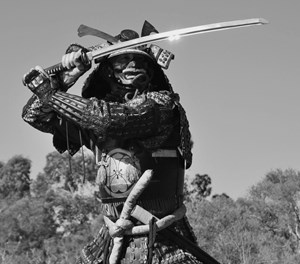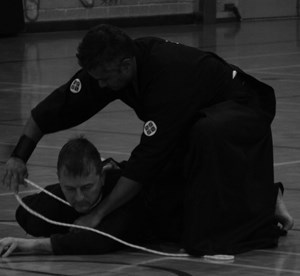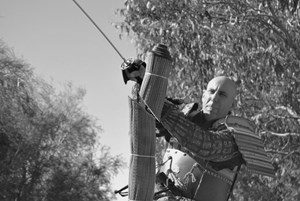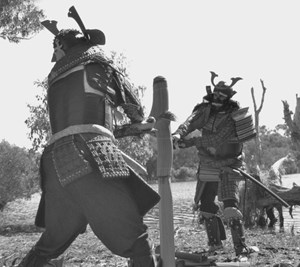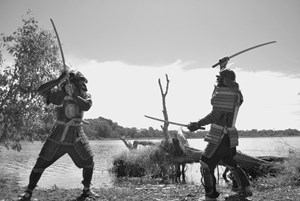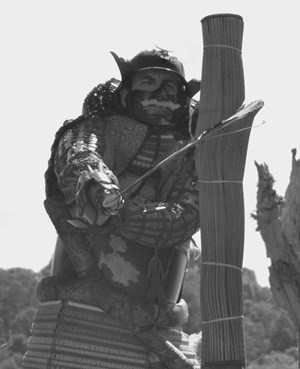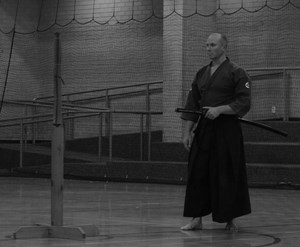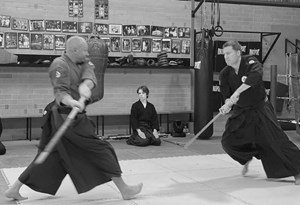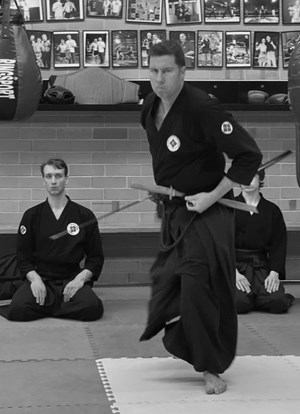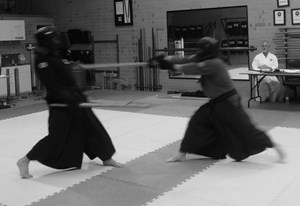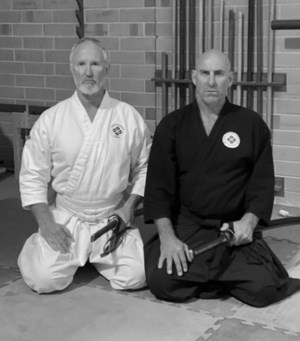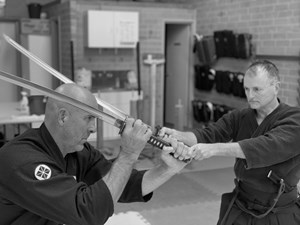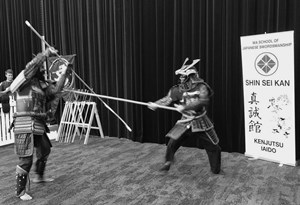KENJUTSU Notes, Terms and Definitions
By Doug Spear SenseiSword periods
Koto - old swords 900-1596Shito - new swords 1596-1800
Shin-Shinto- new new swords 1800-1868
Gendai - Modern swords 1868-present
The Sword in Japanese History
The development and evolution of the Samurai sword is closely tied to the different Japanese periods. The following paragraphs provide a condensed and comprehensive view of Japanese history;Ancient period (Before AD 650) Chinese and Korean masters primarily made swords of this period. There aren't very many examples of these swords surviving today. This period marks the beginning of the Japanese culture under the reign of emperor Jimmu.
Nara Period (650 to 793) The first capital city of Japan was established during this period. New laws were introduced and the imperial family established a stronghold. The need for a better-equipped army started creating the need for the development of better swords.
Heian Period (794 to 1191) Kyoto became the capital of Japan and was ruled by the Fujirawa clan. This era produced some of the best examples of Samurai swords as new techniques were developed.
Kamakura Period (1192 to 1336) Feudal Japan is started. The Shogunate form of government is in place. The Mongols attempt to invade Japan and are met by Kamatura warriors who defend the island ferociously. However, their weapons are no match for the Mongol forces and they are beaten. Suddenly, typhoon season starts and the Mongol ships are destroyed stopping the invasion of Japan. The Kamakura warriors see the need for better swords and begin working on developing better techniques. Some of the best-built swords emerge at this time. Emperor Godaigo gathers up forces and manages to overthrow the Shogunate.
Muromachi Period (1337 to 1573) The Shogunate returns to power. Japan is split in two as civil war erupts. The conflict lasts for over 100 years and causes a huge supply of swords to appear, however due to the large volumes the quality is inferior to the Kamakura Period.
Azuchi-Momoyama Period (1574 to 1602) Japan is reunited; the three uniters are Nobunaga, Hideyoshi and Tokugawa. The existing large armies are put to use by invading China and Korea. The art of sword making continues to expand.
Edo Period (1603 to 1867) Modern day Tokyo becomes the capital of Japan. This is a period of relative peace. The Tokugawa Shogun Dynasty rules Japan. The Shogun restricts all interaction with foreigners through a single port. Admiral Perry's dramatic entrance into Tokyo harbour to demanding Japan opens its boarders to the west took place at the end of this period. Swords made through this period have enormous aesthetic value but Japan has lost the techniques that made the blade so effective.
Modern Period (1868 to now) Emperor Meiji regained power as the Shogunate collapses. In 1876 he created a law prohibiting anyone from wearing a Samurai sword. The Satsuma Rebellion occurs during this period, the Samurai's last stand against the modernisation of Japan. By the time Japan goes to war against Russia at the turn of the century the army look like a modern Western Army.
Mental Aspects
MushinLiterally "no mind". A state of cognitive awareness characterized by the absence of logical or rational thought. A state of mind in which the mind acts/reacts without giving the thought concrete existence. MUSHIN is often erroneously taken to be a state of mere spontaneity. Although spontaneity is a feature of MUSHIN, it is not straightforwardly identical with it. It might be said that when in a state of MUSHIN, one is free to use concepts and distinctions without being used by them.
Zanshin
Lingering awareness - to be ready at anytime. To be fully alert in combat and business situations.
Sen
Responsive and combative initiative, everything is constantly changing
Heiho
Strategies and tactics. Fighting under various conditions and with a general sensitivity to ones surrounding.
Distancing
The space between the objects and should be considered when making decisions
Maai - Timing
Being in the right place at the right time to take advantage of an opening as it occurs; if you have to think about it you have missed the opportunity. Make it advantageous.
Psycho / physical dominance
Dominance over your opponent before, during and after confrontation. Its not a psycho/ physical dominance, its not a dominance of physical strength, rather a psychological dominance and control of an opponent expressed through body language, eye contact, posture, breathing and movement (zanshin lingering awareness) etc
Three Combative Traits
Steadfast Mind - to be calm and active. When the five senses sight, hearing, touch, smell and taste register threat, the brain processes this by the release of hormones and helps prepare for the fight, flight or freeze response and which can cause anxiety fear panic or mindless rage.Intuition - The brain is constantly screening for signs of threat, and depending on the intensity it will then decide how to react instantly to respond to the threat. The more the experience the person has with his martial arts training, the more it is likely to be an instantaneous action. The person has little time to think but has the use of good strategies and tactics
Volition - Will initiative in combat situations. The Japanese describe this as
Go no sen - Response action - luring an opponent into making a foolish attack, so to counter attack.
Sen no sen - pre-emptive action using your initiative to prevent the opponent using their's.
Sensen no sen - pre active action - using initiative to suppress or defeat an opponent before he has the chance to contemplate an attack.
(These terms indicate a type of actions or in some cases withheld action in relation to a combative situation)
The final element of combative effectiveness, integration of techniques, incorporating the biomechanics and transferable skill, and mindset. Basic techniques should be biomechanically efficient; involving major muscle groups- mindset refers to one mind -any weapon
This synergistic combination of the three psychophysical functions steadfast mind, Intuition and Volition alters the state of consciousness, which is known as the combative flow state. You are under a tremendous amount of pressure with adrenalin running through your system, your mind can travel were everything seems in slow motion and helps you anticipate anything. This state can be manifested through, and facilitated by, training in prearranged movements, giving the person a great physical and psychological advantage in combat in which his body is relaxed and allows him/her to use their energy explosively and efficiently, with a calm mind that's cool and fearless and drawing on his combative knowledge and experience through his training.
Bushido
Bushido, literally means the "way of the warrior", and is the starting point for all martial arts. Bushido was the code, the way of life of the samurai and was for years the most important part of the education and studies of the samurai.
Budo developed itself gradually taking its resources in mortal war techniques of Bujutsu. Later on, in an attempt to group all Bujutsu principles to a more understandable system, the code of the Bushido was summarized as follows:
Humility
This is the understanding that you cannot do everything on your own. You need to be humble enough to realize that you need help to achieve your goals.
Concealment
Having worked out your plan and begun your strategy, for you to survive and achieve your goals you must not have your potential competitors gain access to your train of thought. If they like your ideas better than their own and have the acumen to bring them to fruition then you will be left behind, with no business at all.
Creative Artist
Architects, builders, plumbers, painters and other martial artist are all people (artists) to be used in achieving your goals.
Research
Every time you teach, ask yourself, "is the technique real?" Do the students understand your explanations? Research and improve your training. It is not good enough to be happy with your current understanding and think that you can live forever. If you are standing still, you are going backwards.
Courage
Doing what must be done in the face of overwhelming fear. It is not overcoming fear; it is acting in spite of that fear.
•Valour, courage and bravery
•Hardness and coolness
•Patience, endurance and promptness (always be ready)
•Justice
•Finding the truth of a matter and then acting on that truth.
Honour
Doing only that which engenders respect and praise from others. Any infringement upon a samurai's honour was felt as a sense of shame. The fear of disgrace was great.
Loyalty
Unwavering devotion. Loyalty assumes great importance. In the conflict of loyalty and affection, the code of bushido should never steered from the choice of loyalty.
Veracity (Truthfulness)
Open honest and sincere in thoughts, words and actions. Lying is deemed cowardly and is regarded as dishonourable. When a samurai gave his word, no oath was necessary. Sincerity and straight forwardness. Sense of honour and justice.
Benevolence
Always placing the needs of others before your own. Love, affection for others, sympathy and nobility of feelings were regarded as the highest attributes of the soul. The samurai showed benevolence to the weak or vanquished.
Self Control
Knowing the right action, during hardship and prosperity, and then doing it. It was unmanly for a samurai to betray his emotions on his face. The calmness of behaviour and composure of the mind should not be disturbed by passion of any kind.
Politeness
This should extend from a sympathetic regard for the feeling of others. Always display politeness, courtesy and excellent manners. Make politeness a way of life.
Obedience
This develops a bond of trust between the instructor and the student, which improves mutual receptivity and speeds the learning process.
Etiquette
Understanding the codes of social behaviour. Show the proper respect and humility both inside and outside the dojo, in training and everyday life. Training begins and ends with courtesy.
Fidelity
Fidelity towards master (lord) and fatherland
Respect towards parents, brothers and sisters
Assiduousness, steadiness
Simplicity
Simplicity and purity
Musashi
The Book of Earth sets out the basics of strategy and of living. Musashi identifies four ways of life - farmer, merchant, noble warrior and craftsman - and expounds on the way of the warrior, and the mindset and philosophies required of a true samurai.
'The Book of Water' is a guide to learning combat, and sets out descriptions of various daito moves.
'The Book of Fire' deals with battle strategy and tactics. It emphasises aggression, and the importance of drawing out your enemy's weaknesses and exploiting them.
'The Book of Wind' deals with traditions, and with the intellectual part of strategy; knowing your opponent, and the strengths and weaknesses of his strategy.
The last book, 'The Book of Emptiness', deals with the mysticism and philosophy of the warrior. The book is intended as a guide, rather than a how-to manual, and is structured to force the reader to improve himself.
"Man, know thyself, for I am within. The sword is the key to heaven and hell" (Minomoto Musashi 1584-1645).
Kamae: The stances and philosophies
Chudan-gamae - Kamae of water. Hold your sword still like water but not stagnant water, with an undercurrent watching, waiting and always covering. Be like water and adapt to each circumstances by being able to cast off fixed notions and fill the shape of each new vessel and respond accordingly. A positive kamae.
Mid level stance with the weight placed evenly, and the shoulders, waist and hips in the same plane
The tip of your sword is aimed at your opponent's throat
The distance between your heels should be approximately twice the length of your foot
Gedan-gamae
Philosophical interpretation: The kamae of ground or sand. Low-level attitude. This is performed with strong spiritual bearing. It was used when one had to take on many enemies. A negative kamae.
Gedan or lower position, the weight is evenly distributed over both feet.
The distance between your heels should be about 3-foot lengths
The sword is held so that the point is between twelve and eighteen inches from the floor
Waki-gamae Philosophical interpretation: Attitude where your sword is concealed behind your right side. You don't show your opponent strength. You can react as you wish. A positive kamae
The sword is held to the side and the weight evenly distributed
The heels should be between two and a half and three-foot lengths apart
Hasso-gamae Philosophical interpretation: A waiting or inviting your opponent to attack. A kamae of like standing like a big tree thrusting towards the heaven, quiet yet firm, with roots under the ground. Cut like the rush of a falling tree, unstoppable. A semi positive kamae.
This is a strong stance assumed just prior to action
As you close with your opponent, the blade is bought closer to the head, ready to strike
The weight is evenly distributed; the heels of which are approximately three-foot lengths apart
Jodan-gamae Philosophical interpretation: Kamae of fire, which is very aggressive and burns everything. Ready to engulf your opponent by cutting him with fire, shooting outwards, burning him by the strength of your cut in a rush of flames. A high level attitude, expert's kamae. Looking down on your opponent from heaven. A kamae of total attack. Having a strong spirit and thinking nothing of defence, you only have to cut down with the sword. A positive kamae.
The sword is held above the head with the pommel (kashira) pointed towards your opponent. The hand is positioned about one fist length above, and in front of the forehead. The weight is evenly distributed between both feet.
Quotes
In the annals of warfare (i.e., business, chess and martial arts), it is common knowledge to strike the opponent at his weakest point with maximum efficiency of force. Of course, one wants to appear near to the opponent when actually far; appear far when actually near. This tactic keeps the opponent confused. "The enemy must not know where I intend to give battle. For if he does not know where I intend to give battle he must prepare in a great many places." (Sun Tzu)"And so it is in business, before devising the strategy of how to compete in the marketplace, it is absolutely vital to understand that marketplace perfectly. This involves realizing what the strengths and weaknesses of the company are, who the competition happens to be, what their strengths and weakness are, what market characteristics stand out, and many other pieces of information that the business review process is meant to reveal." (Schwartzman, July 1998)
"Knowing the opponent and understanding him as a human being enables one's own strategy with greater accuracy. To be successful a chess player must have the ability to understand his opponent's intentions." (Krogius, 1976)
